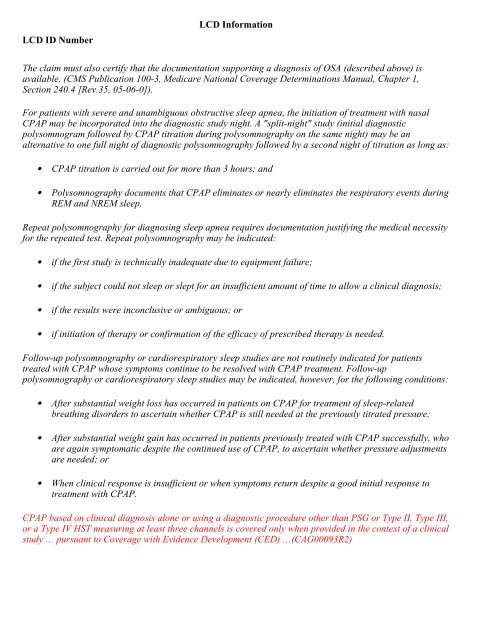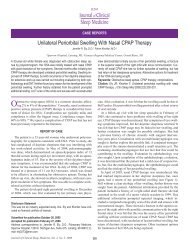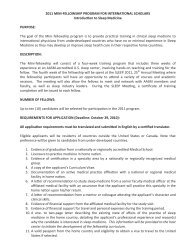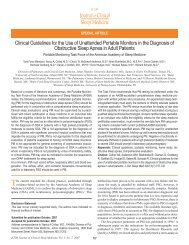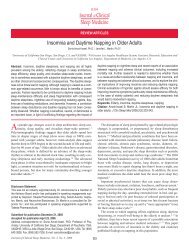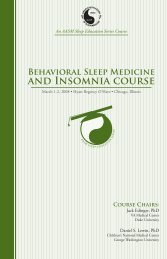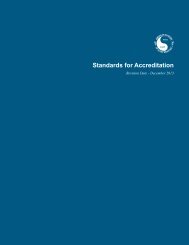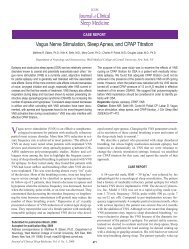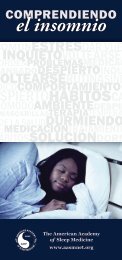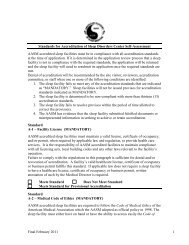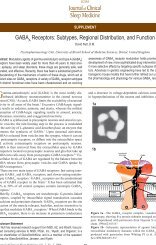LCD for Polysomnography and Sleep Studies (L26428) - American ...
LCD for Polysomnography and Sleep Studies (L26428) - American ...
LCD for Polysomnography and Sleep Studies (L26428) - American ...
Create successful ePaper yourself
Turn your PDF publications into a flip-book with our unique Google optimized e-Paper software.
<strong>LCD</strong> ID Number<strong>LCD</strong> In<strong>for</strong>mationThe claim must also certify that the documentation supporting a diagnosis of OSA (described above) isavailable. (CMS Publication 100-3, Medicare National Coverage Determinations Manual, Chapter 1,Section 240.4 [Rev.35, 05-06-0]).For patients with severe <strong>and</strong> unambiguous obstructive sleep apnea, the initiation of treatment with nasalCPAP may be incorporated into the diagnostic study night. A "split-night" study (initial diagnosticpolysomnogram followed by CPAP titration during polysomnography on the same night) may be analternative to one full night of diagnostic polysomnography followed by a second night of titration as long as:• CPAP titration is carried out <strong>for</strong> more than 3 hours; <strong>and</strong>• <strong>Polysomnography</strong> documents that CPAP eliminates or nearly eliminates the respiratory events duringREM <strong>and</strong> NREM sleep.Repeat polysomnography <strong>for</strong> diagnosing sleep apnea requires documentation justifying the medical necessity<strong>for</strong> the repeated test. Repeat polysomnography may be indicated:• if the first study is technically inadequate due to equipment failure;• if the subject could not sleep or slept <strong>for</strong> an insufficient amount of time to allow a clinical diagnosis;• if the results were inconclusive or ambiguous; or• if initiation of therapy or confirmation of the efficacy of prescribed therapy is needed.Follow-up polysomnography or cardiorespiratory sleep studies are not routinely indicated <strong>for</strong> patientstreated with CPAP whose symptoms continue to be resolved with CPAP treatment. Follow-uppolysomnography or cardiorespiratory sleep studies may be indicated, however, <strong>for</strong> the following conditions:• After substantial weight loss has occurred in patients on CPAP <strong>for</strong> treatment of sleep-relatedbreathing disorders to ascertain whether CPAP is still needed at the previously titrated pressure;• After substantial weight gain has occurred in patients previously treated with CPAP successfully, whoare again symptomatic despite the continued use of CPAP, to ascertain whether pressure adjustmentsare needed; or• When clinical response is insufficient or when symptoms return despite a good initial response totreatment with CPAP.CPAP based on clinical diagnosis alone or using a diagnostic procedure other than PSG or Type II, Type III,or a Type IV HST measuring at least three channels is covered only when provided in the context of a clinicalstudy … pursuant to Coverage with Evidence Development (CED) …(CAG00093R2)


